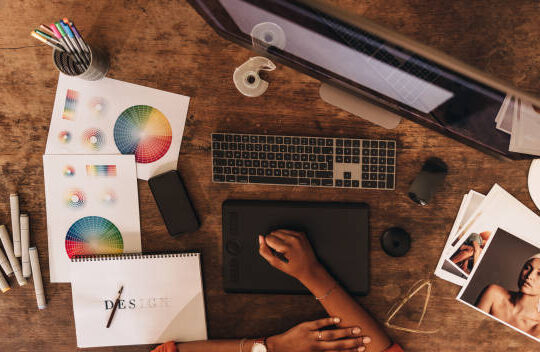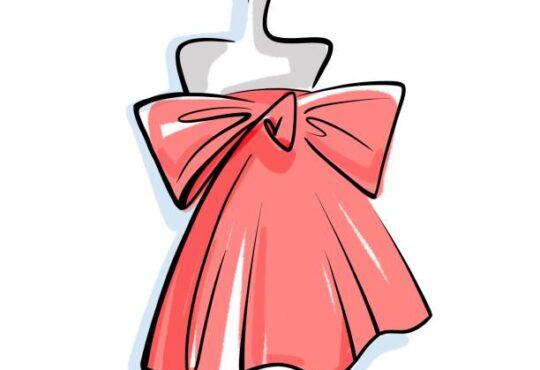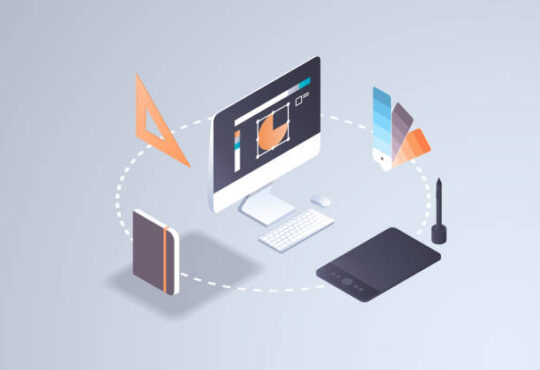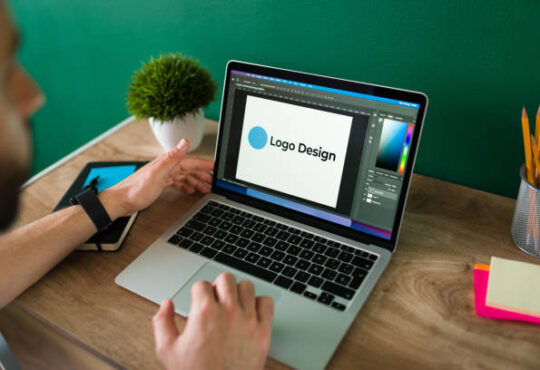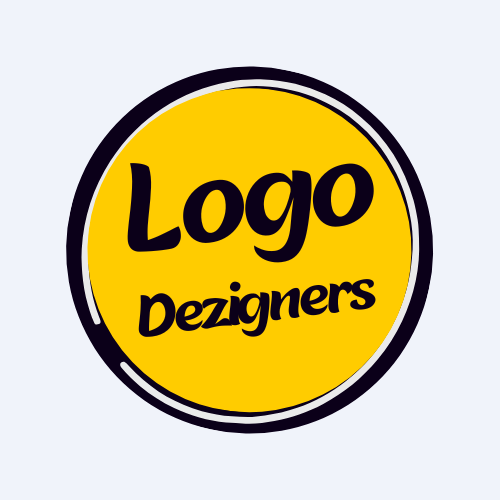
Why can’t I get ideas on designing a logo? What should I do? 2024
Logo design can sometimes feel like a challenging endeavor, particularly when you find yourself struggling to generate fresh and unique ideas. This creative block is completely normal, and even the most experienced designers encounter it. Different factors such as lack of inspiration, overthinking, or simply the pressure to create a perfect logo can contribute to this situation. The essential thing to remember is that there are ways to overcome this hurdle and reignite your creative spark. In the subsequent sections, we will explore some effective strategies to generate logo design ideas when you’re feeling stuck.
Understanding the Purpose
Understanding the purpose of a logo is the first crucial step in the design process. To begin with, it’s important to define the purpose and goals of the logo. Ask yourself, what should this logo accomplish? Should it encapsulate the brand’s identity? Or should it communicate a specific aspect of the brand or its products? Defining your objectives will help narrow down your design approach.
The next important aspect is to identify your target audience and the brand message. A logo should not only resonate with your brand but also with the audience you aim to reach. Understanding your audience’s preferences, behaviors, and expectations will give you a clearer direction.
Also Read: What is the most annoying part of the logo design process in 2024?
Finally, the brand message is another significant factor to consider. What is the key message you want to communicate through your logo? Is it professionalism, creativity, reliability, innovation, or tradition? Incorporating this into your logo design will ensure that it communicates your brand’s values and vision effectively. By understanding these key elements, designers can overcome creative blocks and generate impactful logo design ideas.
Research and Inspiration
Research and inspiration play a vital role in igniting creativity and overcoming design blocks.
Explore Industry Trends and Competitors’ Logos
One of the primary steps in the research process is to examine the industry trends. Keeping up with the latest design trends can provide an understanding of what’s popular and appealing to the audience. However, it’s important to balance your design between being trendy and unique. Studying your competitors’ logos can give you an idea of what works in your industry and can help differentiate your own design. Analyze their logos – are they minimalist or intricate, modern or traditional, colorful or monochrome? Such insights can provide inspiration and a starting point for your own design.
Look for Inspiration Outside the Design World
Don’t limit your sources of inspiration to the design world. Nature, architecture, art, culture, and even personal experiences can serve as a rich source of creativity. Observing the patterns, colors, shapes, and symbolism in these areas can spark unique design ideas.
Utilize Online Platforms and Design Communities
Online platforms like Pinterest, Dribbble, and Behance host a plethora of design concepts from designers worldwide. These platforms can be a great source of inspiration. Furthermore, participating in design communities can provide constructive feedback, help you see things from a different perspective, and motivate you to push your creative boundaries.
Brainstorming Techniques
Brainstorming is a fundamental part of the creative process. It allows designers to generate ideas, explore different options, and stimulate creative thinking. Below, we delve into some effective brainstorming techniques that can help break the barrier of a creative block.
Mind Mapping for Visual Associations:
Mind mapping is a powerful visual tool for organizing and presenting information. It allows designers to visually arrange their ideas, making connections between different concepts and themes. Starting with a central idea, like the brand’s name or the primary service, you can branch out into related topics, themes, or symbols. This method can also assist in generating color schemes, shapes, or typography ideas that could be utilized in the logo design.
Word Association Exercises:
Word association is a free-flowing, rapid-fire exercise that can stimulate creativity and generate a wide variety of ideas. Start with a word related to the brand or industry, then jot down the first word or idea that comes to mind. Continue this process, allowing your thoughts to run freely without overthinking or self-editing. You may find that this process leads to unexpected, innovative concepts for your logo design.
Collaborative Brainstorming with Others:
Inviting others to your brainstorming session can provide fresh perspectives and new ideas. Each participant brings unique experiences and viewpoints, which can lead to unexpected and innovative concepts. The key to effective collaborative brainstorming is to foster an open, non-judgmental environment where all ideas are welcomed and considered.
Sketching and Doodling
Sketching and doodling are invaluable tools in the logo design process. They represent the first physical manifestation of your ideas and offer a tangible medium where you can freely experiment with different concepts.
Embrace the Freedom of Pen and Paper:
In today’s digital age, it’s easy to jump straight into digital design tools. However, starting with pen and paper can offer a unique kind of freedom and immediacy. There are no limits or constraints – you can quickly doodle your thoughts, experiment with different shapes, symbols, or typography, and immediately see how they interact on the page. This tactile approach can help stimulate creativity and pave the way for innovative design ideas.
Start with Rough Sketches to Explore Ideas:
The sketching stage is not about creating a polished, finished design but about exploring ideas and visualizing them. Don’t worry about the quality of your sketches. The goal here is to translate your ideas from abstract concepts into visual elements. Drawing quick, rough sketches of various concepts can help you identify what works and what doesn’t, providing a clearer direction for your design.
Also Read: How much did you pay for a logo design for your startup in 2024?
Refine and Iterate Based on Initial Concepts:
Once you have a variety of rough sketches, it’s time to evaluate, refine, and iterate. Look at your sketches critically – which ones communicate the brand’s message effectively? Which ones resonate with the brand identity? Select the most promising concepts and refine them. Experiment with different variations of the chosen sketches, playing with elements like size, shape, proportion, and alignment. This iterative process is key to developing a robust and impactful logo design.
Color and Typography Considerations
An integral part of the logo design process is the careful consideration of color and typography. These two elements play a crucial role in conveying the brand’s personality and message.
Choose Colors That Resonate with the Brand’s Personality:
Colors have the ability to evoke emotions and convey specific meanings. They can influence how a brand is perceived, making it vital to choose colors that represent the brand’s personality accurately. For instance, blue often signifies trust and reliability, making it a popular choice for finance and healthcare industries. On the other hand, red can evoke feelings of passion and energy, suitable for brands that want to project boldness and vibrancy. When choosing colors, consider the brand’s values, target audience, and industry.
Experiment with Different Font Styles and Sizes:
Typography, much like color, can significantly influence a logo’s impact. Different font styles can impart different moods and feelings. For instance, a serif font may create a sense of tradition and reliability, while a sans-serif font might convey a more modern and clean vibe. Similarly, the size of the typography can make a difference in the overall design, communication, and readability of the logo. It’s important to experiment with different font styles and sizes to find the combination that best encapsulates the brand’s essence.
Seeking Feedback
Share Initial Concepts With Peers or Mentors:
One crucial step in the logo design process is to share your initial concepts with others. This could be peers, mentors, or others in your professional network whom you trust to provide constructive feedback. Sharing your work with others can offer fresh perspectives and help identify any potential issues that you may have overlooked. Their feedback can prove invaluable in improving your design.
Gather Constructive Criticism and Suggestions for Improvement:
Feedback is more than just praise or criticism – it’s a tool for growth and improvement. When seeking feedback, encourage others to provide constructive criticism and actionable suggestions for improvement. It’s essential to approach this process with an open mind; be willing to accept and learn from criticism rather than taking it personally. Remember, the goal of feedback is to enhance your design, not to disparage your efforts.
Utilize Online Communities and Platforms:
Online communities like Behance, Dribbble, or design-centric forums can also be an excellent source of feedback. These platforms have numerous experienced designers who can provide insightful critiques and advice. Additionally, seeing the work of others and the critiques they receive can also provide valuable learning opportunities.
Reevaluate and Refine Based on Feedback:
Once you’ve gathered feedback, it’s time to reevaluate your designs and make necessary refinements. Consider the criticisms and suggestions you’ve received; how can they inform your revisions? Be open to reworking your designs as needed – remember, design is an iterative process, and even the most successful logos often undergo numerous iterations before reaching their final form.
Iterative Design Process
The iterative design process is an approach that involves a cycle of prototyping, testing, analyzing, and refining a product or process. In the context of logo design, this means continuously evolving and refining your design based on feedback and further exploration.
Refine the Logo Based on Feedback:
Incorporate the feedback you’ve received into your next design iteration. Remember, constructive criticism is a tool for improvement, not a personal affront. Use it to make your design stronger and more impactful. Don’t be afraid to make substantial changes if they serve to improve the design.
Experiment with Variations and Alternative Concepts:
Don’t get stuck on a single concept or design element. Experiment with different design elements, colors, typography, and styles. Try out different combinations and see which works best. Sometimes, an idea that didn’t seem promising initially might end up being the perfect solution.
Remember, the iterative design process is not a linear journey but a cyclical one. It’s about making continual improvements until you have a logo that effectively represents the brand’s identity and resonates with the target audience. So, keep iterating, refining, and experimenting until you arrive at a design that satisfies all the project’s requirements and exceeds expectations.
Emphasize the Importance of Simplicity in Logo Design:
Simplicity is often the key to creating a memorable and effective logo. While intricate designs can be visually appealing, they may fail to communicate a brand’s identity quickly and effectively. Simple logos, with clear and concise design elements, are easily recognizable and rememberable. They can communicate the brand’s values and personality immediately, helping the brand to stand out in the viewers’ minds. Moreover, simplicity in design allows for versatility and scalability, ensuring the logo looks great across various mediums and sizes.
Ensure the Logo Works Well Across Various Platforms and Sizes:
A well-designed logo should be versatile, meaning it should maintain its impact and legibility across various platforms and sizes. From business cards and letterheads to social media profiles and billboards, the logo should be effective and consistent. This requires careful consideration during the design process to ensure details are not lost and the logo does not become distorted when scaled up or down. Designers should test the logo in various contexts and sizes to ensure its versatility. Remember, a truly successful logo is one that presents a consistent brand image, regardless of where it is displayed.
Finalizing the Design
Make the Necessary Adjustments Based on Feedback:
As you enter the final stages of the design process, reflect on the feedback and observations gathered from various sources. Make the necessary adjustments to your design, even if they seem minor. These fine-tuning details can significantly enhance the overall impact and effectiveness of your logo. Remember, each piece of criticism is a step toward refinement and perfection.
Consider Scalability and Adaptability:
When finalizing your logo design, critically assess its scalability and adaptability. Ensure that your logo retains its visual integrity and legibility across different sizes, from small business cards to large billboards. Moreover, test if it maintains its impact when translated across various platforms, such as print, digital, or merchandise. The ultimate goal is to create a versatile logo that presents a consistent brand image, no matter where it is displayed.
Confirmation of Final Design:
Once you’ve made the necessary adjustments and are confident about the scalability and adaptability of your logo, it’s time to confirm the final design. This step may involve presenting the final idea to stakeholders or decision-makers for approval, or it could simply mean confirming the design with yourself if you’re the sole decision-maker.
Preparing Files for Various Uses:
Finally, as part of the design finalization process, prepare your logo files for various uses. This could mean saving your logo in different formats (JPEG, PNG, SVG, etc.) or creating different versions for different uses (full color, single color, black and white, etc.). This step ensures that your logo is ready for any application, be it for digital or print use.
Tools and Resources
Introduction to Popular Design Tools:
There’s a wide array of design tools available that can help streamline and enhance your logo design process. Adobe Illustrator is a popular choice due to its vector-based designing capabilities which are crucial for creating scalable logos. Affinity Designer is another powerful, cost-effective alternative offering similar features. For those interested in 3D logo design, Blender is a comprehensive, free-to-use 3D creation suite. Moreover, Canva and LogoMakr are user-friendly, web-based tools that are perfect for beginners or those looking for quick, simple logo designs.
Resources for Further Inspiration and Learning:
Inspiration can be drawn from numerous online platforms. Websites like Dribbble, Behance, and Pinterest showcase a myriad of logo designs from creatives worldwide, offering endless ideas and styles to explore. Additionally, LogoLounge is a dedicated website where you can keep abreast of the latest logo trends. For learning, LinkedIn Learning (formerly Lynda.com) and Coursera offer comprehensive courses on logo design and related software tutorials. Books like “Logo: The Reference Guide to Symbols and Logotypes” by Michael Evamy can also provide insights and inspiration to boost your logo designing skills.
Ask Me Also
How do I come up with an idea for a logo?
The process of coming up with a logo idea can be daunting, but remember – it’s essentially about storytelling. You’re trying to encapsulate the essence of a brand in a single, visual symbol. Here are some steps to help guide you:
- Understand the brand
- Research the industry
- Get inspired
- Brainstorm and sketch
- Refine your ideas
How do I get inspiration to create a logo?
Inspiration for logo design can be sourced from a multitude of avenues. Here are a few strategies that might assist:
Research
- Look for Inspiration Online
- Explore the World Around You
- Sketch and Experiment
- Revise and Refine

